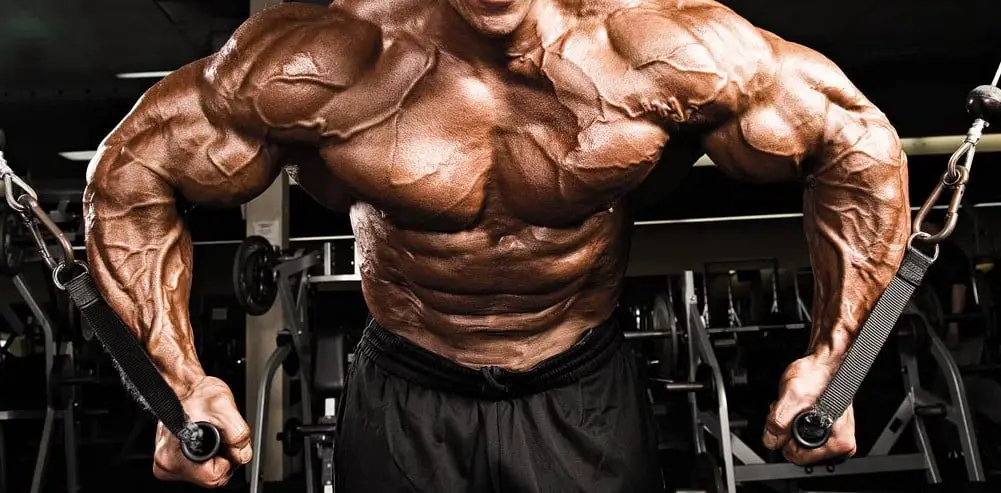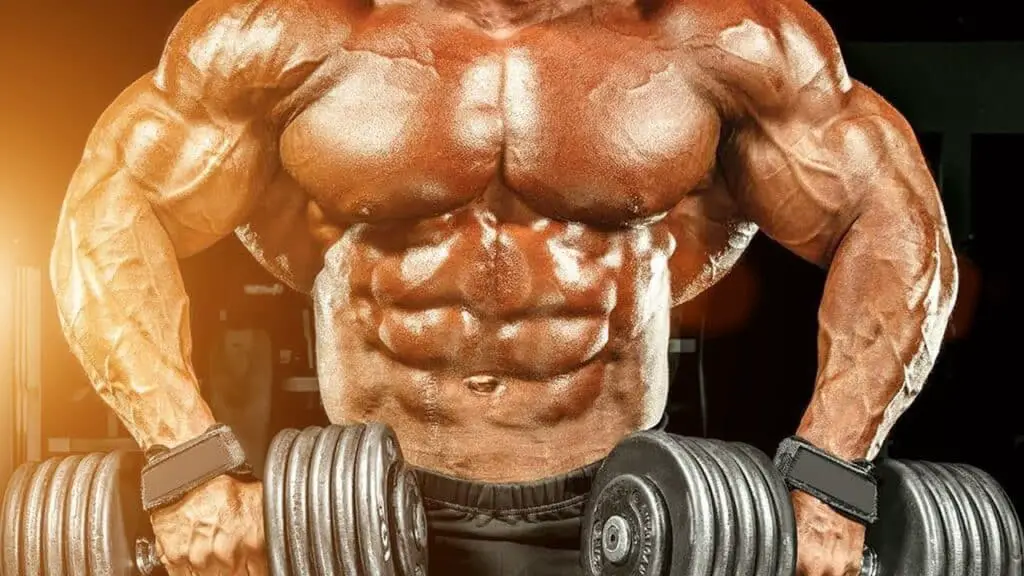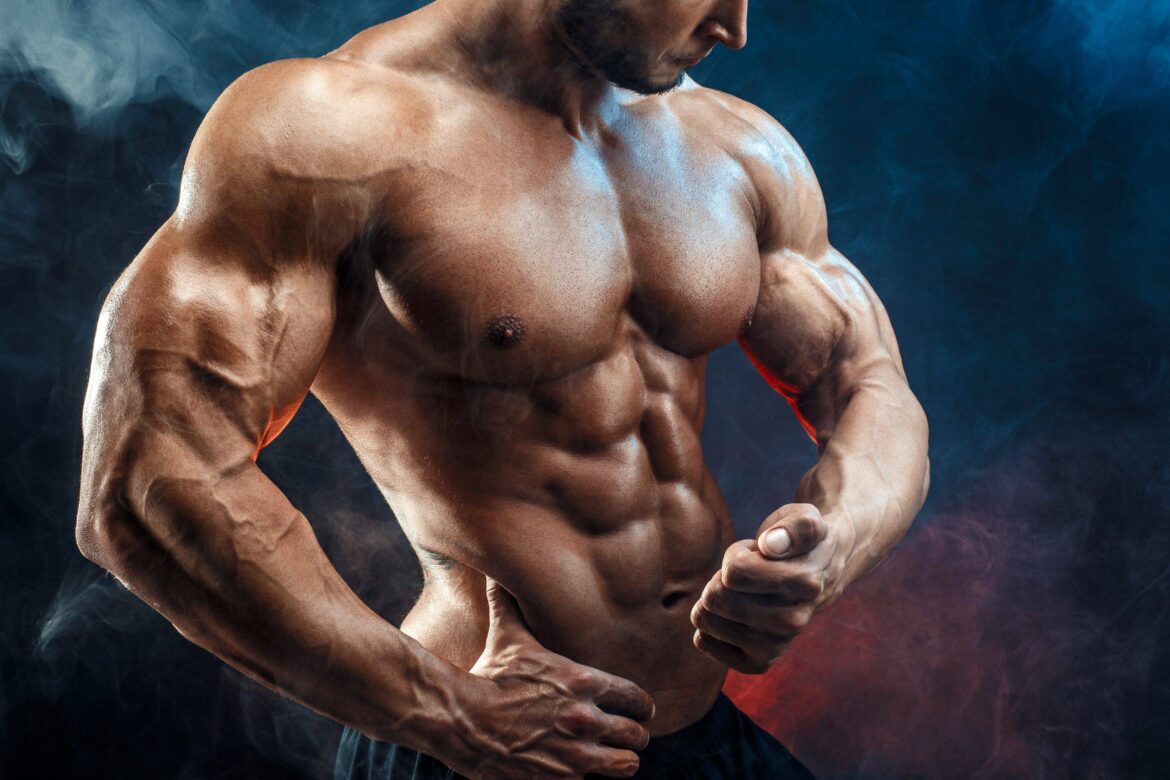Introduction
Are Veins Genetic Bodybuilding: Bodybuilding is an art and science that requires dedication, discipline, and a deep understanding of the human body’s physiology. While hard work, proper nutrition, and consistent training are fundamental to building muscle and achieving a chiseled physique, genetics also play a significant role in determining an individual’s potential for success in bodybuilding. Among the various aspects of a muscular physique, the visibility of veins, often referred to as vascularity, is a topic that frequently sparks curiosity.
One of the most crucial factors in achieving vascularity is having a low body fat percentage. The lower the body fat, the more likely it is that veins will become visible. Genetics can influence an individual’s natural body fat percentage, with some people naturally carrying less body fat and thus having a greater predisposition for visible veins. The structure and placement of veins are genetically determined. Some individuals may have more prominent veins due to their genetics, including factors such as the size and depth of their veins. Vein prominence can vary significantly among individuals.
Genetics also influence skin characteristics, including thickness and transparency. Thin, translucent skin tends to show veins more prominently. However, skin characteristics are not solely determined by genetics but can also be influenced by factors like sun exposure, aging, and overall health. While vascularity is not directly tied to muscle size, genetics play a role in muscle development. Some individuals may naturally have a propensity to build larger, more defined muscles, which can contribute to the overall appearance of vascularity when body fat levels are low.

Are muscular veins genetic?
Genetics and age
Some people naturally have translucent skin that makes their veins more visible, especially if they’ve been working out. Others have naturally larger veins that are more even more apparent if they exercise often.
Body Fat Percentage: Regardless of genetics, maintaining a lower body fat percentage is one of the most critical factors in enhancing vascularity. Reduced body fat allows veins to become more visible beneath the skin.
Exercise and Muscle Definition: Engaging in regular resistance training and building well-defined muscles can enhance the appearance of vascularity. As muscles grow and become more defined, veins that run over them may become more prominent.
Hydration: Staying adequately hydrated can help veins appear more pronounced. Dehydration can cause veins to constrict and become less visible.
Nutrition: Proper nutrition, including managing sodium intake, can impact water retention and vein visibility. Reducing sodium intake can help minimize water retention, making veins more visible.
Is vein vascularity genetic?
Formation of the vascular tree is the result of a complex interplay between genetic factors and epigenetic factors including hemodynamics and tissue oxygenation. The process of cardiovascular development occurs in two steps, vasculogenesis and then vascular remodeling.
Vein Structure: Genetic factors can influence the size and prominence of veins. Some individuals may have larger or more prominent veins, making them more visible under the skin.
Skin Characteristics: Genetics also play a role in determining skin thickness and transparency. Thin, translucent skin tends to show veins more prominently. The genetic makeup of an individual’s skin can affect how easily veins become visible.
Body Fat Percentage: While body fat percentage is not solely determined by genetics, genetic factors can influence an individual’s baseline body fat percentage. Lower body fat levels generally make veins more visible.
Is it Genetic to have more veins?
Genetics: Visible veins are due to your genetics, so having family members with vein issues increases the chances that you will experience them too. Age: As you age, you lose fatty tissue and collagen, which thins out your skin and makes your veins more noticeable.
Genetic Variability: It’s important to emphasize that genetic variability plays a significant role in vein vascularity. In a diverse population, individuals can have a wide range of genetic factors influencing their vein visibility. This means that within a family or among people of similar backgrounds, there can still be substantial differences in vein prominence due to genetic variation.
Familial Patterns: While there is a genetic component to vein vascularity, it’s not always a straightforward inheritance pattern. While family members may share certain genetic traits, including vein size and structure, other factors such as lifestyle choices, body fat levels, and overall health can vary among family members and influence vein visibility differently.
Exercise and Muscle Development: Physical activity and exercise can have a significant impact on vein vascularity. Engaging in regular exercise, particularly strength training and resistance exercises, can increase muscle definition and the appearance of veins, even for individuals who may not have a strong genetic predisposition for vascularity.
Body Fat Percentage: Body fat percentage remains a crucial factor in vein visibility. Lower body fat levels generally lead to more visible veins. Genetics can influence an individual’s baseline body fat percentage, but lifestyle choices, including diet and exercise, have a substantial impact on managing body fat.
Can veiny arms be genetic?
Your arms are also susceptible to visible veins. You often see this on bodybuilders and others who are into fitness. These veins are often desirable because they come along with low body fat and well-defined muscles. Veiny arms can also be caused by increased blood pressure, high stress levels, genetics, and age.
Exercise and Muscle Definition: Engaging in regular strength training and resistance exercises can enhance muscle definition and contribute to the appearance of more visible veins, even for individuals who may not have a strong genetic predisposition for veiny arms.
Hydration: Proper hydration can affect the visibility of veins. Staying well-hydrated can help veins appear more pronounced, while dehydration can cause veins to constrict and become less visible. Hydration is a controllable factor that can influence vein visibility.
Aging: As individuals age, changes in skin elasticity and collagen levels can influence the visibility of veins. While this is not solely a genetic factor, it’s a natural part of the aging process.
Do veins mean muscle growth?
Summary. Veiny arms are not a direct indicator of fitness. However, veins can become more prominent if a person has high muscle mass and low body fat. Weightlifting and other types of resistance training can increase vein visibility in the arms.
Reduced Body Fat: One of the primary factors that can make veins more visible is a reduction in body fat. As individuals lower their body fat percentage through diet and exercise, veins that were previously less visible may become more prominent. This can give the appearance of increased vascularity, even if there hasn’t been significant muscle growth.
Muscle Definition: While veins themselves do not indicate muscle growth, increased muscle definition can contribute to the visibility of veins. As muscles become more defined and prominent, the veins that run over them may become more noticeable.
Improved Circulation: Regular exercise, particularly resistance training, can improve blood circulation throughout the body. Improved circulation can lead to veins appearing more pronounced, especially during and after exercise.
Hydration: Proper hydration can also affect vein visibility. Staying well-hydrated can help veins appear more pronounced, while dehydration can cause veins to constrict and become less visible.
Why are some bodybuilders veiny?
Bodybuilder’s veins bulge in various places on the body, like the neck, arms, chest, legs and hands. This occurs as oxygenated blood is pushed through the body and muscles during these strenuous workouts, causing an increase in blood flow back to heart and lungs that the veins must work harder to circulate.
Low Body Fat Percentage: Bodybuilders typically aim for very low body fat levels, especially when preparing for competitions. Reducing body fat results in thinner subcutaneous fat layers, which make veins more visible beneath the skin. Lower body fat levels are achieved through strict dieting and cardio exercises.
Muscle Definition: Intense resistance training leads to muscle hypertrophy (growth) and greater muscle definition. As muscles become larger and more defined, they push against the skin, making veins on the surface more visible. The combination of lean muscle mass and reduced body fat enhances vascularity.
Increased Blood Flow: Regular and intense resistance training improves blood circulation throughout the body, including to the muscles. As a response to the increased demands of exercise, the body delivers more blood to working muscles. This can cause veins to dilate (expand) to accommodate the increased blood flow, making them more visible.
Dehydration: Some bodybuilders may strategically dehydrate themselves leading up to competitions to reduce subcutaneous water retention. Dehydration can cause veins to become more pronounced as the body retains less water, and the skin appears tighter.
Are visible veins good?
If you have suddenly noticed new or increasing visibility of veins, particularly in areas where they were not previously visible, it may be a sign of an underlying vascular condition. Visible veins can sometimes indicate an issue with blood flow or vein health that requires further evaluation.
Vascularity and Low Body Fat: Visible veins are often associated with lower body fat levels. For many people, achieving a lean and healthy body composition is a positive goal. Lower body fat levels are generally associated with reduced risk of certain health conditions, such as heart disease and diabetes.
Fitness and Muscle Definition: In the context of fitness and bodybuilding, visible veins can be seen as a sign of well-developed muscles and good muscle definition. For individuals who engage in strength training and bodybuilding, having visible veins can be a marker of their dedication to training and nutrition.
Hydration and Health: Veins can be more prominent when you are well-hydrated, as adequate hydration helps maintain healthy blood flow. In this sense, visible veins can be an indicator of good hydration practices, which are essential for overall health.
Genetics: The visibility of veins is influenced by genetics. Some individuals naturally have more visible veins due to factors like vein size, skin transparency, and overall circulation. For them, visible veins are a normal characteristic and not necessarily indicative of any specific health condition.
Is vascularity genetic bodybuilding?
But your vascularity also depends on your genetics, too. “Some may be very lean but with little vascularity and some can have more fat and still have some vascularity in cases,” says Dr. Nadolsky. Bottom line, it most likely is a good indicator that you’re fit, but it’s not a given.
Reduced Body Fat: One of the most significant factors in achieving vascularity is having a low body fat percentage. The lower the body fat, the more likely it is that veins will become visible. This is achieved through strict dieting and cardiovascular exercise.
Muscle Definition: Resistance training and building well-defined muscles can create the appearance of veins running over the muscles. As muscles become more defined, they can push against the skin, making veins more visible.
Improved Circulation: Regular and intense resistance training improves blood circulation throughout the body, including to the muscles. Improved circulation can lead to veins appearing more pronounced.
Hydration: Proper hydration can affect vein visibility. Staying well-hydrated can help veins appear more pronounced, while dehydration can cause veins to constrict and become less visible.

Conclusion
In the world of bodybuilding, the visibility of veins, often referred to as vascularity, has long been a topic of fascination and discussion. Bodybuilders and fitness enthusiasts alike aspire to achieve a level of vascularity that enhances the aesthetics of their muscular physique. As we’ve explored in this article, vascularity is influenced by a combination of genetic factors and individual effort, making it a complex and multifaceted aspect of bodybuilding.
It is clear that genetics play a significant role in determining an individual’s baseline vascularity. Some people are genetically predisposed to have lower body fat percentages, thinner and more translucent skin, and veins that are naturally closer to the surface. These factors create a foundation upon which vascularity can be built. Factors like hydration, nutrition, sodium intake, and overall health impact vein visibility. These are areas where individuals have direct control through their choices and habits.
Achieving and maintaining a low body fat percentage is essential for enhancing vascularity. This is primarily accomplished through disciplined nutrition and cardiovascular exercise. Regardless of genetics, individuals can reduce body fat through effort and determination. Building and sculpting muscles through resistance training is a fundamental aspect of bodybuilding. Well-defined muscles contribute to the overall appearance of vascularity. The effort put into resistance training can make a significant difference.

